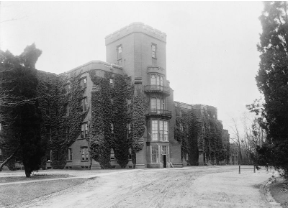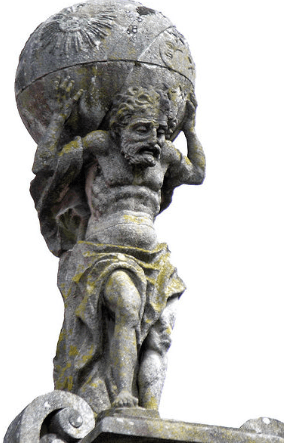The Power of Narratives: A Tale of Lobotomist and Patient
Sometimes I find that a tale does not belong in a book or article I am writing, but it is too good to forget. This is one such example.
On March 19, 1945, Walter J. Freeman, M.D., the subject of my book The Lobotomist who popularized and developed the psychosurgical procedure known as the lobotomy, paged open the medical record of a schizophrenic patient named Alfred Weaver and wrote down a story:

“This man was admitted to St. Elizabeths Hospital [in Washington, D.C.] about 1938. Some years ago he gave the appearance of holding up some heavy object. When asked what it was, he said it was the men’s receiving building. Later he began holding up the Statue of Liberty, and when he stopped doing this he started holding up the Empire State Building. At the present time he is supporting the world. He usually holds it with both hands, but when he eats and his appetite is good (although he has lost some 40 lbs. recently), he supports the world with one hand. His arm was extended, his fingers were tightly clinched. The fingers are distorted by long, continued pressure. He was sweating profusely and his tongue is out between his teeth like one who is exerting himself to his utmost.”
Freeman didn’t stop there — he had more story to tell. When a physician pressed down upon Weaver’s arm, the patient declared, “Oh, God! Don’t you think I am holding up enough already?” Another patient entered the room by crawling on the floor, and Weaver told a nurse that “someone should explain to that man that he really can walk — he just imagines he can’t.” Freeman detailed the quick retaliation of the crawling patient, who pointed out to the same nurse that “someone ought to tell Mr. Weaver the he is really not holding up the world — he just imagines he is.” Finally Freeman concluded: “The burden which Mr. Weaver is carrying seemed almost too much, so we decided to try and relieve him of this; therefore, a prefrontal lobotomy was decided upon.”

The outcome of this unfortunate patient’s lobotomy, one of some 3,500 psychosurgical operations Freeman directed during his career, is unknown. All that survives is the story. Say what you may about Freeman — that he was arrogant, quick to judge, unethical, misguided, or blind to his failings — he could tell a story. His narrative of patient Weaver combines irony, comedy, sharp observation, and rhythmic nuance to create a portrait. Something a bit superior and mean-spirited also flavors this story, and it tells us about Freeman.
One story less than 200 words long illuminates the personalities of two men, the subject and the narrator. That is a demonstration of the power of storytelling. Freeman’s story is scientifically unproductive, telling little of value about the patient’s medical condition, the cause of his illness, or how a lobotomy or any other treatment might help. Yet it conveys a great deal about the patient’s discomfort, social position in the hospital, and relationship to his caregivers. These are personal aspects of Alfred Weaver’s experience, the facets of his life that a scientific examination might ignore. Nothing delivers those human qualities more forcefully and convincingly than a story.